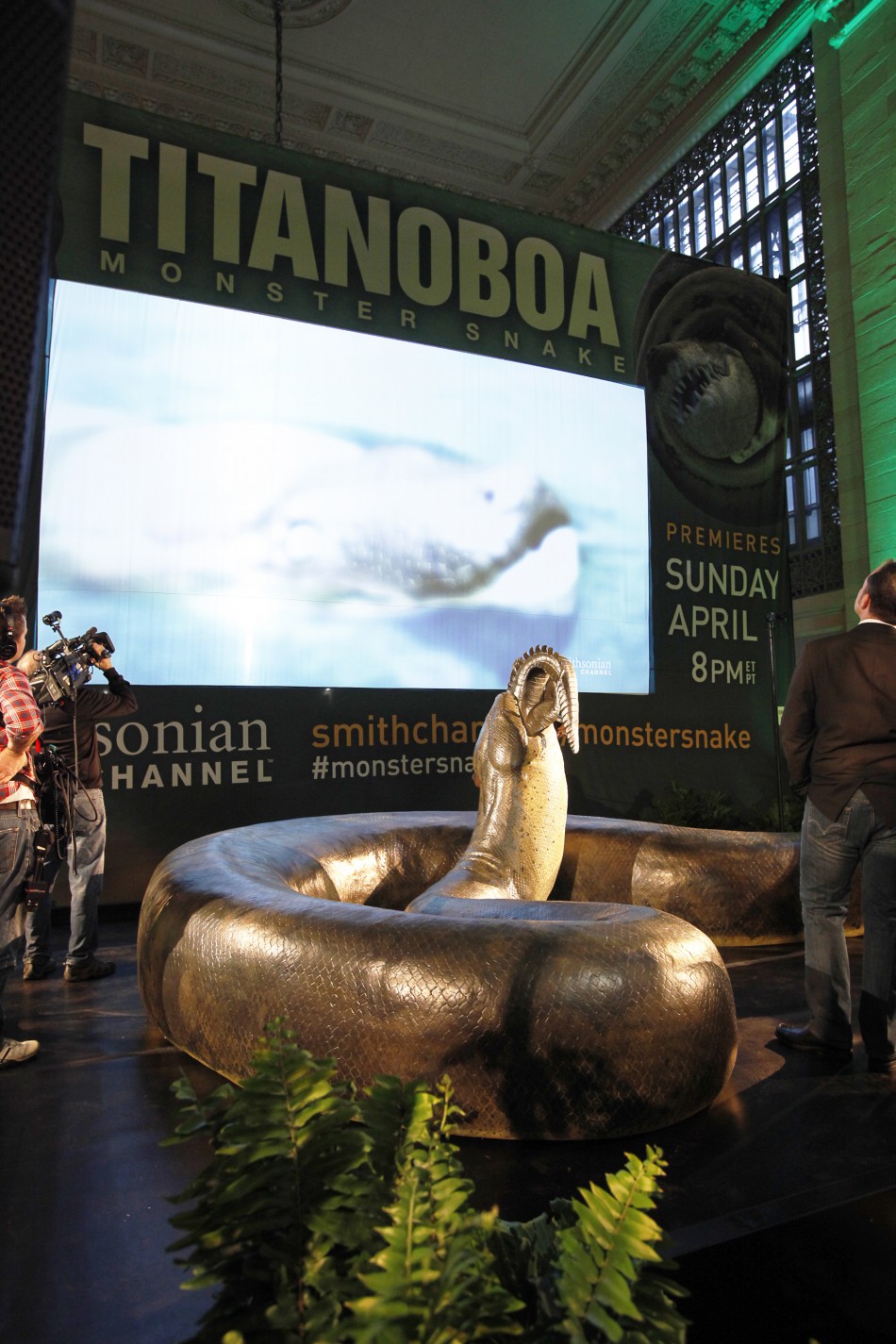Monstrous 48-Foot Snake Related to Boa Constrictors Brought Back to Life [PHOTOS]
Scientists have uncovered remains of what is believed to be the largest snake in the world from deep underground in a Colombian coal mine.
Displayed at a new exhibition at the Natural History Museum, the massive 48-foot predator could swallow a whole crocodile without showing a bulge. Featuring a full-scale model of Titanoboa and clips from a Smithsonian Channel documentary, the exhibition delves into the discovery, reconstruction, and implications of this enormous reptile.
Coined Titanoboa: Monster Snake, the exhibition follows the groundbreaking discovery by a team of scientists working in one of the world's largest open-pit coal mines at Cerrejon in La Guajira, Colombia.
This 2,500-pound, 48-foot-long prehistoric snake was found near fossilized plants, giant turtles and crocodiles dating back to the Paleocene epoch, more than 60 million years ago when the world's first known rainforest existed, and dinosaurs no longer ruled the earth.
"Never in your wildest dreams do you expect to find a 14-metre boa constrictor. The biggest snake today is half that size," the BBC UK quoted Dr Carlos Jaramillo, a scientist with the Smithsonian Tropical Research Institute and part of the team that made the discovery saying.
The story behind this excavation started in the year 2002 when a Colombian student visiting the coal mine made an intriguing discovery: a fossilised leaf that hinted at an ancient rainforest from the Paleocene epoch.
In the decade following, expeditions led by the Smithsonian Tropical Research Institute and the Florida Museum of Natural History, the University of Florida opened a unique window into perhaps the first rainforest on earth.
Weighing approximately one-and-a-half tons, the snake called Titanoboa is believed to be related to the modern boa constrictors.
Catch a glimpse of the massive snake at the exhibition hall:





© Copyright IBTimes 2025. All rights reserved.





















